From Little Women to Downton Abbey
In the 19th and early 20th century, Lenox evolved from farm community and county seat to a resort for the ultra wealthy. In the early days visitors came for the fresh air and intellectual stimulation of some key families, writers and artists. They built (by later standards) modest homes, often near town and often lived in Lenox most of the time.
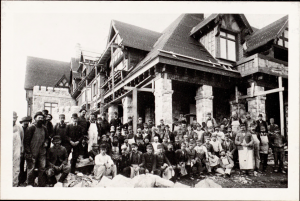
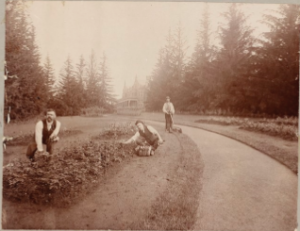
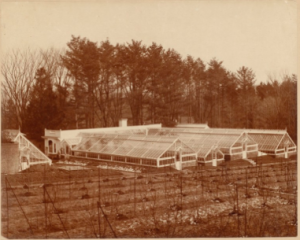
As America moved into the post Civil War Gilded Age, Lenox moved from the atmosphere of Little Women to the atmosphere of “Downton Abbey.” By the end of the 19th century, the visitors came to build and visit their lavish homes and grounds. Further from town (partly to accommodate the 100’s of acres of grounds) and much, much bigger and grander (topping out – Shadow Brook – at 250 rooms), visitors came to hunt, golf and party–sometimes for just a couple of weeks a year (for instance, Margaret Emerson at Holmwood).
Parallel Town Development
Unproven but likely generalization: at the beginning of the century the lives of ordinary Lenox residents were influenced by various local and national trends; by the end of the century, it was all about the estates.
Rationale?
- In the early part of the 19th century, the population mix was changing in concert with national trends. The original families of Lenox were almost entirely descendants of The Great Migration (English Puritans). Some descendants of those early families remained into the 20th century(Sedgwick, Egleston, Walker, Tucker, Rockwell), but others had started to move on to better opportunities in the west shortly after Revolution (Paterson). At the same time, European revolutions and hardships were bringing in newcomers from Europe — particularly the Irish.
- In the early part of the century, Lenox residents were evolving from strictly agriculture employment to serving the courts, serving the wealthier families or trade. In keeping with the rest of the northeast, employment was also moving into manufacturing (Lenox Furnace) – and particular to Lenox and Richmond – mining. The new arrivals from Europe moved into many of these serving and manufacturing jobs. Over time, they became managers and owners — of stables, of freight handling, etc. New names began to emerge as families of importance in town: O’Brien, Mahanna and others.
- By the end of the century, Lenox Furnace manufacturing had
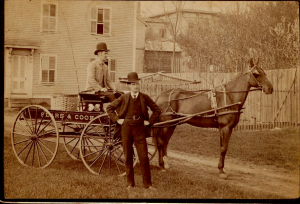
Sears and Cook with Their Wagon 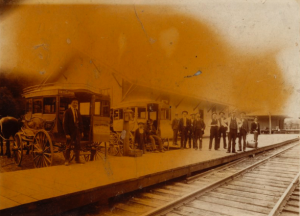
Picking up Arrivals at Lenox Station 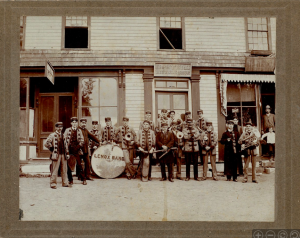
Lenox Town Band in Front of Peters Bike Shop slowed and mining had ceased, but building had taken off. In addition to the Mahannas, some new names (Peters, Clifford, Bull) moved from doing the work to investing in real estate and managing construction, freightage and other industries that supported their fellow residents as well as the coming and goings of the estate families and their retinues. After they were built, the estates employed hundreds to manage their houses and grounds.
